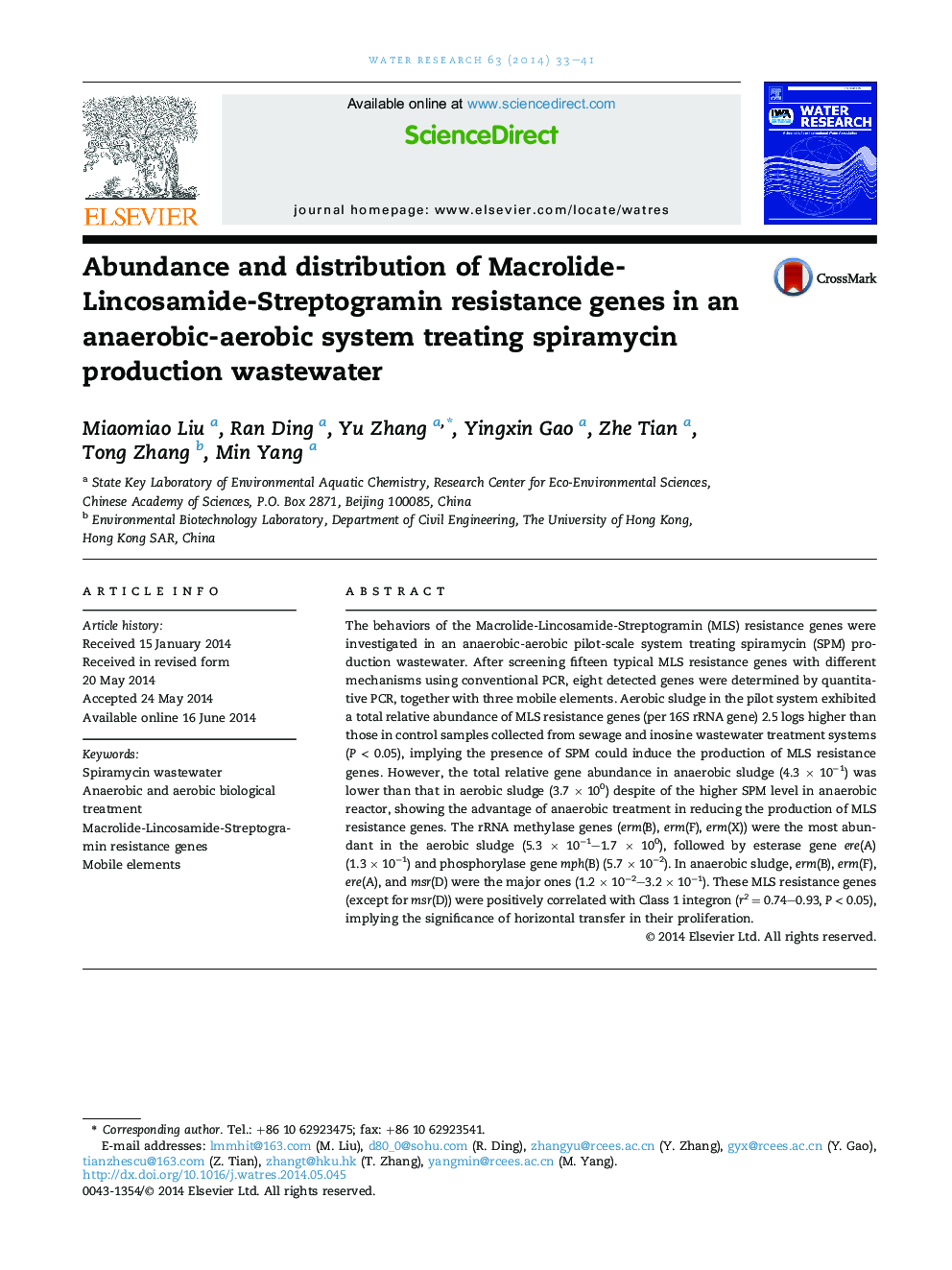| کد مقاله | کد نشریه | سال انتشار | مقاله انگلیسی | نسخه تمام متن |
|---|---|---|---|---|
| 4481457 | 1623105 | 2014 | 9 صفحه PDF | دانلود رایگان |
• SPM wastewater treatment system showed high abundances of MLS resistance genes.
• Less MLS resistance genes were found in anaerobic sludge than aerobic sludge.
• The most abundant MLS resistance genes were positively correlated with intI1.
• Anaerobic and aerobic sludge showed different phylogenetic distributions of ere(A).
The behaviors of the Macrolide-Lincosamide-Streptogramin (MLS) resistance genes were investigated in an anaerobic-aerobic pilot-scale system treating spiramycin (SPM) production wastewater. After screening fifteen typical MLS resistance genes with different mechanisms using conventional PCR, eight detected genes were determined by quantitative PCR, together with three mobile elements. Aerobic sludge in the pilot system exhibited a total relative abundance of MLS resistance genes (per 16S rRNA gene) 2.5 logs higher than those in control samples collected from sewage and inosine wastewater treatment systems (P < 0.05), implying the presence of SPM could induce the production of MLS resistance genes. However, the total relative gene abundance in anaerobic sludge (4.3 × 10−1) was lower than that in aerobic sludge (3.7 × 100) despite of the higher SPM level in anaerobic reactor, showing the advantage of anaerobic treatment in reducing the production of MLS resistance genes. The rRNA methylase genes (erm(B), erm(F), erm(X)) were the most abundant in the aerobic sludge (5.3 × 10−1–1.7 × 100), followed by esterase gene ere(A) (1.3 × 10−1) and phosphorylase gene mph(B) (5.7 × 10−2). In anaerobic sludge, erm(B), erm(F), ere(A), and msr(D) were the major ones (1.2 × 10−2–3.2 × 10−1). These MLS resistance genes (except for msr(D)) were positively correlated with Class 1 integron (r2 = 0.74–0.93, P < 0.05), implying the significance of horizontal transfer in their proliferation.
Figure optionsDownload high-quality image (141 K)Download as PowerPoint slide
Journal: Water Research - Volume 63, 15 October 2014, Pages 33–41
